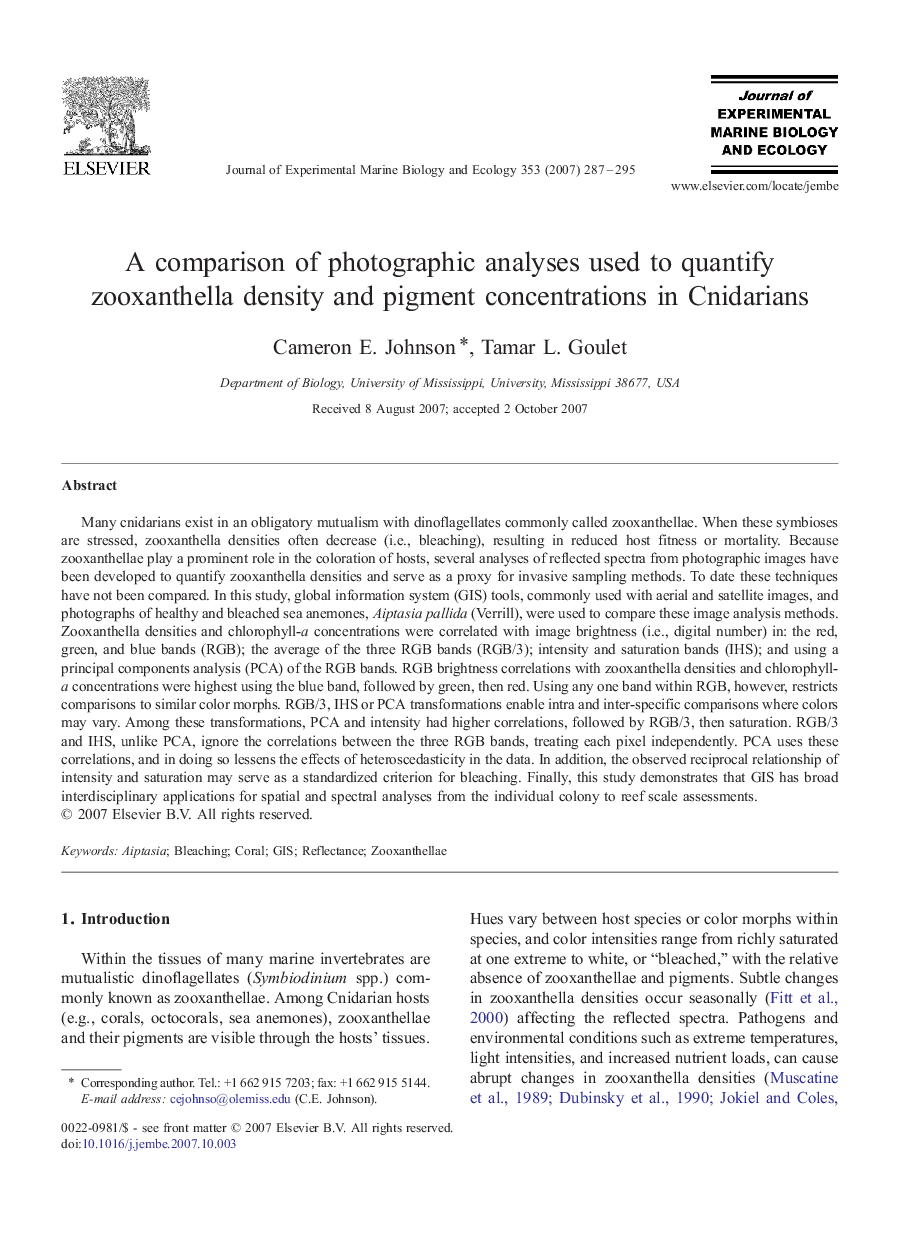| کد مقاله | کد نشریه | سال انتشار | مقاله انگلیسی | نسخه تمام متن |
|---|---|---|---|---|
| 4397461 | 1305888 | 2007 | 9 صفحه PDF | دانلود رایگان |

Many cnidarians exist in an obligatory mutualism with dinoflagellates commonly called zooxanthellae. When these symbioses are stressed, zooxanthella densities often decrease (i.e., bleaching), resulting in reduced host fitness or mortality. Because zooxanthellae play a prominent role in the coloration of hosts, several analyses of reflected spectra from photographic images have been developed to quantify zooxanthella densities and serve as a proxy for invasive sampling methods. To date these techniques have not been compared. In this study, global information system (GIS) tools, commonly used with aerial and satellite images, and photographs of healthy and bleached sea anemones, Aiptasia pallida (Verrill), were used to compare these image analysis methods. Zooxanthella densities and chlorophyll-a concentrations were correlated with image brightness (i.e., digital number) in: the red, green, and blue bands (RGB); the average of the three RGB bands (RGB/3); intensity and saturation bands (IHS); and using a principal components analysis (PCA) of the RGB bands. RGB brightness correlations with zooxanthella densities and chlorophyll-a concentrations were highest using the blue band, followed by green, then red. Using any one band within RGB, however, restricts comparisons to similar color morphs. RGB/3, IHS or PCA transformations enable intra and inter-specific comparisons where colors may vary. Among these transformations, PCA and intensity had higher correlations, followed by RGB/3, then saturation. RGB/3 and IHS, unlike PCA, ignore the correlations between the three RGB bands, treating each pixel independently. PCA uses these correlations, and in doing so lessens the effects of heteroscedasticity in the data. In addition, the observed reciprocal relationship of intensity and saturation may serve as a standardized criterion for bleaching. Finally, this study demonstrates that GIS has broad interdisciplinary applications for spatial and spectral analyses from the individual colony to reef scale assessments.
Journal: Journal of Experimental Marine Biology and Ecology - Volume 353, Issue 2, 28 December 2007, Pages 287–295